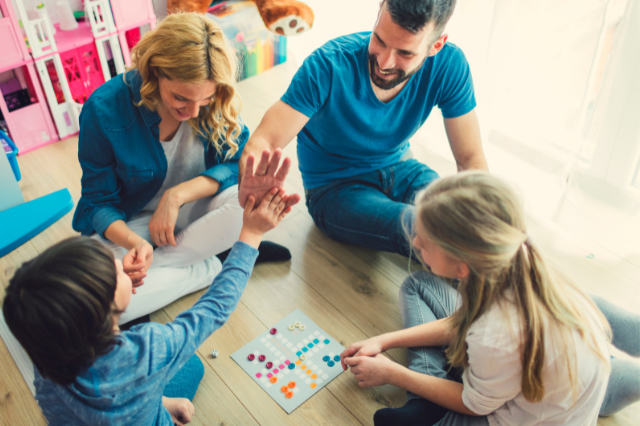Blog
 06 Jul 2023
06 Jul 2023
How To Increase Language At Home
Watching your children grow and learn to talk is such an amazing experience. Children develop and learn more about language every day during each conversation they are a part of. These language opportunities can be as simple as meal time, diaper changes, family gatherings, and during playtime. While these familiar activities can seem to be
 05 Jun 2023
05 Jun 2023
Best Toys and Activities That Promote Fine Motor Skills
Fine motor skills refer to the ability to use the small muscles of the hands and fingers to perform precise movements. Fine motor skills are important for many everyday activities, such as writing, drawing, buttoning clothes, using utensils, and using electronic devices. They are also important for more complex activities, such as playing musical instruments,
 03 May 2023
03 May 2023
Using Everyday Items for Therapy Activities Across Disciplines Is Crucial
Whether our setting is a clinic, a home, or a school, therapists have access to both discipline specific and everyday items to use in therapy. What happens when we take one item and use it across ALL disciplines? Our Team Leads did just that to present to our therapists how to utilize these five commonly
 13 Apr 2023
13 Apr 2023
Get a Handle on W-Sitting Early
W-sitting can be a typical play and transitioning position, but it becomes a red flag when it’s a child’s main preferred position for play or only play position. What is W-sitting? A sitting position in which both knees are in front of the body and both feet are behind the body, creating a “W” with
 15 Mar 2023
15 Mar 2023
Gestalt Language Processing
Echolalia is NOT a language disorder, it’s the first stage of Gestalt Language Development. Did you know…. There is more than one way to acquire and develop language! Myth: Children start learning language by learning certain words. Fact: Any child starting the language development process will be processing units. Two terms to understand regarding this
 27 Jan 2023
27 Jan 2023
What happens in a person’s brain when they sustain a concussion or brain injury?
Everyone responds differently so we don’t know exactly what happens, however, there are ways to gain insight into the brain through the body. There are 2 main functions of the brain that need to be considered: survival and movement. Survival and movement Think of your brain like the engine of a car. The brain literally
 15 Dec 2022
15 Dec 2022
Holiday Gift Guide – Top Picks from a Mariposa Therapist!
As the holidays quickly approach, our families will be asking if we have any good ideas for gifts! Here are some fun holiday gifts that will not only excite but also pack a skill-building punch! Holiday gift ideas for toddlers ages one to three years. Holiday gift ideas for preschoolers from ages three to five
 09 Dec 2022
09 Dec 2022
Engage During Mealtime
Mealtime can be challenging in so many ways. Take the stress out of mealtime by making food fun! Starting a positive routine around mealtime can allow everyone to feel more comfortable and allow for natural communication opportunities and sensory play. Here are some tips and ideas for creating an enjoyable environment while incorporating the entire
 22 Sep 2022
22 Sep 2022
Proprioceptive Neuromuscular Facilitation
Teresa Corless is a Physical Therapy Assistant with Mariposa Therapy Services. Originally from Illinois, she holds an Associate of Applied Science from Southern Illinois University She has been a practicing PTA for 31 years, treating both children and adults. With experience in skilled nursing, hospital, pediatrics, and schools, we sat down with her to learn
 26 May 2022
26 May 2022
Occupational Therapy: How Sensory Modulation Treatment Helps Patients
Mariposa’s Occupational Therapists help both children and adults live a more active and full life. Occupational Therapists help patients develop and improve fine motor skills such as handwriting and using scissors. They can also help clients learn to manage emotions and behaviors that might interfere with daily activities such as feeding, bathing and dressing. Melinda
